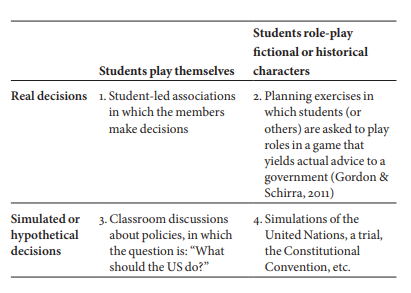The 35-page article, Authority and Deliberative Moments: Assessing Equality and Inequality in Deeply Divided Groups (2017), was written by Rousiley C. M. Maia, Danila Cal, Janine K. R. Bargas, Vanessa V. Oliveira, Patrícia G. C. Rossini, and Rafael C. Sampaio, and published in the Journal of Public Deliberation: Vol. 13: Iss. 2. From the abstract, “The notion of equality is central to public deliberation, but few researchers have examined how participants construct interactions in face-to-face group discussion involving unequal conditions of authority. This study analyses discussion between slum residents and police officers in Brazil, focusing on both reciprocal and hierarchical relationships in the flow of deliberation”. Read an excerpt from the article below and find the PDF available for download on the Journal of Public Deliberation site here.
From the introduction…
The literature on informal talk, political discussion and deliberation is growing at a rapid pace (Conover & Searing, 2005; Maia, 2012, 2017; Marques & Maia, 2010; Moy & Gastil, 2006; Walsh, 2004, 2007; Wyatt, Katz, & Kim, 2000). Conscious of this tendency, researchers are now quite cautious about specifying the features of different group-affiliations and the social conditions and circumstances enabling argumentative discussion (Black, 2008; Grölund, Bächtiger, & Setälä, 2014; Steiner, 2012; Wojcieszak & Mutz, 2009). The topic of authority is central to political theory. However, it is rarely operationalized in empirical research. Although important studies have looked at the dynamics of face-to-face group discussions involving unequal conditions (Gerber, 2015; Karpowitz & Mendelberg, 2014; Mendelberg, Karpowitz, & Oliphant, 2014; Pedrini, Bächtiger, & Steenbergen, 2013; Steiner, 2012; Steiner, Jaramillo, Maia, & Mameli, 2017; Walsh, 2007), these studies have not yet examined moments when conversation is shaped by hierarchical relationships. How authority is enacted in the flow of conversation remains poorly understood; and our knowledge of the sources of authority that constrain or enable dialogue is limited.
This paper contributes to filling this gap. Contrary to scholars who assume that authentic deliberation cannot be established between members of highly uneven authority, we argue that “moments” of constructive dialogue are possible and productive for deliberation. By focusing on intergroup communication between slum-dwellers and police officers in Brazil, we examine what sources of authority are mobilized in both deliberative and non-deliberative moments and how participants unequal in power can construct reciprocal relationships. To develop this study, we conducted six discussion groups with slums inhabitants and police officers in Brazil. This study applies the concept of “Deliberative Transformative Moments” (DTM) (Jaramillo & Steiner, 2014; Steiner et al., 2017), designed to assess how certain elements affect the flow of discussion.
This analysis contributes to explaining the complexity of the notion of equality in the dynamics of face-to-face group discussions. Against a static view of power relationships, our analysis clarifies a range of authority sources that serve to dynamically shape relationships in conversational contexts. Our findings reveal that sources of authority based on life experiences predominate when deliberation is at a high level, whereas functional credentials prevail when deliberation is low. We suggest that the role of authority on deliberation is far from straightforward; functional authority is not necessarily dominative or coercive, and it can be combined with behaviors (such as empathetic understanding, search for commonalities, and self-criticism) that lead to reciprocal interactions.
Download the full article from the Journal of Public Deliberation here.
About the Journal of Public Deliberation![]()
Spearheaded by the Deliberative Democracy Consortium in collaboration with the International Association of Public Participation, the principal objective of Journal of Public Deliberation (JPD) is to synthesize the research, opinion, projects, experiments and experiences of academics and practitioners in the emerging multi-disciplinary field and political movement called by some “deliberative democracy.” By doing this, we hope to help improve future research endeavors in this field and aid in the transformation of modern representative democracy into a more citizen-friendly form.
Follow the Deliberative Democracy Consortium on Twitter: @delibdem
Follow the International Association of Public Participation [US] on Twitter: @IAP2USA
Resource Link: www.publicdeliberation.net/jpd/vol13/iss2/art7/



